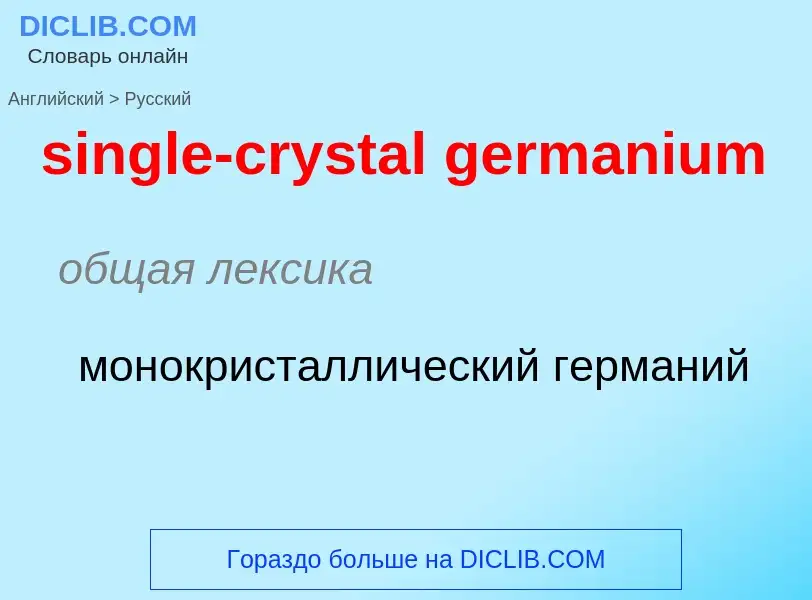Translation and analysis of words by ChatGPT artificial intelligence
On this page you can get a detailed analysis of a word or phrase, produced by the best artificial intelligence technology to date:
- how the word is used
- frequency of use
- it is used more often in oral or written speech
- word translation options
- usage examples (several phrases with translation)
- etymology
single-crystal germanium - translation to russian
общая лексика
монокристаллический германий
общая лексика
монокристаллический
общая лексика
монокристаллический
Definition
Wikipedia

In materials science, a single crystal (or single-crystal solid or monocrystalline solid) is a material in which the crystal lattice of the entire sample is continuous and unbroken to the edges of the sample, with no grain boundaries. The absence of the defects associated with grain boundaries can give monocrystals unique properties, particularly mechanical, optical and electrical, which can also be anisotropic, depending on the type of crystallographic structure. These properties, in addition to making some gems precious, are industrially used in technological applications, especially in optics and electronics.
Because entropic effects favor the presence of some imperfections in the microstructure of solids, such as impurities, inhomogeneous strain and crystallographic defects such as dislocations, perfect single crystals of meaningful size are exceedingly rare in nature. The necessary laboratory conditions often add to the cost of production. On the other hand, imperfect single crystals can reach enormous sizes in nature: several mineral species such as beryl, gypsum and feldspars are known to have produced crystals several meters across.
The opposite of a single crystal is an amorphous structure where the atomic position is limited to short-range order only. In between the two extremes exist polycrystalline, which is made up of a number of smaller crystals known as crystallites, and paracrystalline phases. Single crystals will usually have distinctive plane faces and some symmetry, where the angles between the faces will dictate its ideal shape. Gemstones are often single crystals artificially cut along crystallographic planes to take advantage of refractive and reflective properties.


.jpg?width=200)

![floating zone process]], some single crystalline fragments of tantalum, and a high-purity (99.99% = 4N) 1 cm<sup>3</sup> tantalum cube for comparison. This photo was taken by Alchemist-hp. floating zone process]], some single crystalline fragments of tantalum, and a high-purity (99.99% = 4N) 1 cm<sup>3</sup> tantalum cube for comparison. This photo was taken by Alchemist-hp.](https://commons.wikimedia.org/wiki/Special:FilePath/Tantalum single crystal and 1cm3 cube.jpg?width=200)
